
views
- To confirm your most up-to-date vehicle registration status, contact your state’s DMV online, by phone, or in person.
- Contact the DMV to clear up any suspensions on your registration right away in order to avoid facing hefty fines and other legal hot water.
- Be proactive in replacing a lost registration card or renewing your registration when it’s due—don’t assume the DMV will handle things for you.
Online
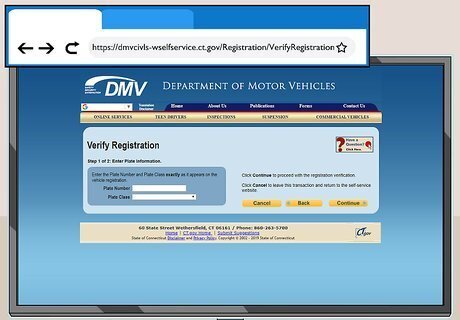
Visit the website for your state department of motor vehicles. Search for "motor vehicle registration" and the name of your state to find the correct website. Make sure you're on a government website—most of them use the extension “.gov.” Scan the page for the link to the information you need. Each state’s website is different, but it’s safe to assume you’ll need to enter your vehicle’s VIN number (and perhaps other vehicle or driver/owner info) in order to access the current registration status. In Florida, for example, you need either the VIN number or the vehicle’s title number, while in Ohio you need the license plate number, last 4 digits of the VIN, and your email address. Here are the links to the appropriate sites for each of the 10 largest U.S. states (by population): California; Texas; Florida; New York; Pennsylvania; Illinois; Ohio; Georgia; North Carolina; Michigan.
By Phone

Call the state DMV if you can’t (or prefer not to) check online. While most people find it easier to get their registration information online, you also have the option of calling your state's department of motor vehicles. Look for the toll-free number on the website, your registration card, or your driver’s license. Have as much information about your vehicle, license, and registration on hand as possible before calling. When you do call, calmly and clearly explain to the customer service representative what information you need from them. Here are the phone numbers for the 10 most populous U.S. states: California: 1-800-777-0133 Texas: 1-888-368-4689 Florida: 1-850-617-2000 New York: 1-800-698-2931 Pennsylvania: 1-717-412-5300 Illinois: 1-800-252-8980 Ohio: 1-844-644-6268 Georgia: 1-855-406-5221 North Carolina: 1-919-715-7000 Michigan: 1-888-767-6424
In Person
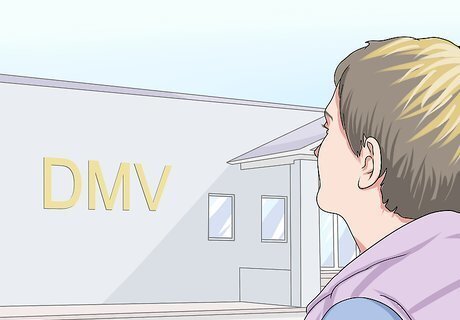
Bring all the documentation you have with you to the DMV office. While you might rather have teeth pulled than spend an afternoon at the motor vehicle bureau, visiting in person is sometimes the easiest (or only) way to get the info you need. Search for your closest DMV branch online and confirm their operating hours. Before heading out, collect any documents you think could possibly be relevant—your driver’s license, most recent registration card, insurance card, vehicle title, and so on. Be thorough so you don’t have to end up making a second trip! Several states allow you to make an online reservation ahead of time, which can definitely shorten your waiting time at the DMV. Check to see if your state offers this perk, and definitely take advantage of it if available.
What if my registration is suspended?

Figure out why it was suspended and provide documentation to restore it. Insurance lapses and traffic citations are the most common causes of registration suspensions, but you might have a suspension due to unpaid tolls or traffic tickets, among other possibilities. If you get official notification (nearly always by mail) of a registration suspension, and want to restore your registration, contact your DMV (online, by phone, or in person) and be prepared to provide documentation to support your case for restoration. For example, if your registration was suspended due to lapsed vehicle insurance, get proof of insurance documentation from your insurance company. Or, if it was suspended for unpaid tolls, gather documentation showing that you have paid all overdue tolls (and any fines). Don’t be surprised if you have to pay some sort of fine or fee in order to restore your registration. If you believe your registration was wrongly suspended, gather whatever documentation you have to support your case, and consider consulting an attorney with relevant experience.
What does a vehicle registration card look like?
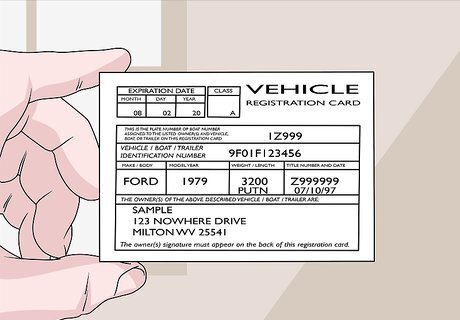
This varies by state, but the card contains basic vehicle and owner info. When you registered (or renewed the registration for) your vehicle, you almost certainly received an official registration card to keep in the vehicle. This card contains general information about the person the car is registered to (likely you), such as name, address, and driver’s license number. It also displays basic info for the vehicle, such as the make, model year, and VIN number, and the expiration date for your current registration. The size, shape, and layout of the registration card varies by state, but it’s typically small enough to easily fit into your vehicle’s glovebox—because this is the recommended place to keep it! (Most states require you to keep your registration card in your vehicle, and to show it to law enforcement if requested.) Some states also require you to affix registration stickers to your license plate(s). These should arrive by mail along with your new/renewed registration card. If your registration has been suspended, your card won't reveal this information. You’ll have to check online, by phone, or in person.
Replacing Lost Documents
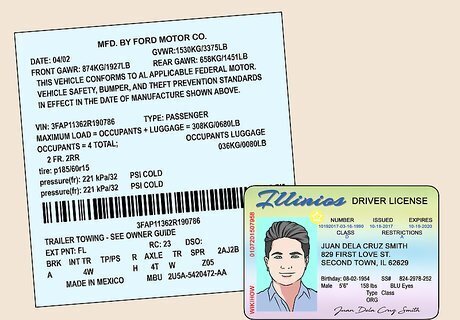
Gather your vehicle and driver's license information. If you've lost your registration card and need to replace it, you'll need information sufficient to identify your specific vehicle and prove that you are its lawful owner and operator. Documents or information you may need includes: Your valid state driver's license Your vehicle's VIN (here’s help finding it) Your license plate number Auto insurance information
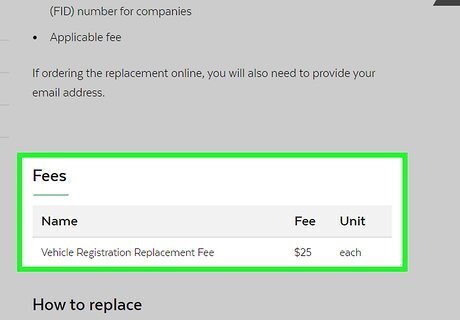
Find out the fees for replacement documents. Most states charge a fee for replacement registration documents, although it's usually less than what you paid for the initial registration. The amount of the fee usually appears on the department's website, or you can call the department and find out. Expect the fees for a replacement registration card to be under $30. If your registration expires in less than 6 months, the fee may be reduced.

Request replacements online or by phone for convenience. Search for the website for your state's department of motor vehicles and find out if you can order replacement documents online. Look for a registration page or tab, then look for a link to replace documents. If your state allows you to order replacement documents online, you'll see instructions on how to do that. Call the state department of motor vehicles if you can't order online. When ordering online or by phone, you'll typically need a major credit or debit card to pay any replacement fees. If you order a replacement registration online, some states may provide a digital copy that you can print and place in your vehicle right away.

Make your request in person to get replacement documents faster. Heading to the DMV is nearly always less convenient than handling things online or by phone, but it often comes with a big advantage: you’ll usually get your replacement registration right away, rather than having to wait for it to come in the mail. Also, by ordering in person, you typically have more payment options. This can be helpful if you don't have a major credit or debit card. Remember to check your DMV’s website to see if you can book an appointment online instead of waiting in line at the office.
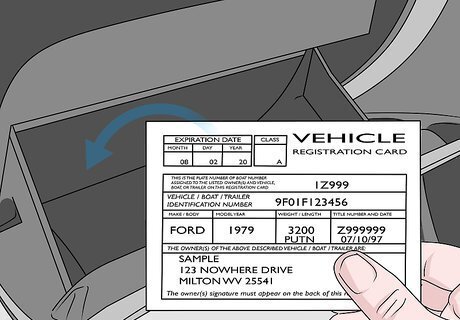
Place your replacement registration card in your vehicle. Whether you get your replacement registration immediately or have to wait for it to come by mail, don’t delay in stashing it in its proper place. As soon as you get it, put it in the glovebox of your vehicle so you don’t lose it again. Make a photocopy of your registration card so you don't have to pay to replace it if you lose it again. While some states may require you to have the original card in your vehicle, others accept a legible photocopy as proof of registration.
Renewing Your Registration
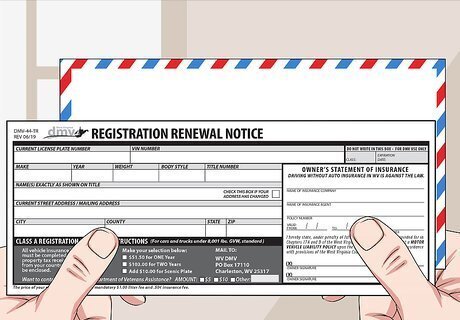
Contact the DMV if you don’t get a renewal notification. Most states will send you a renewal notice for your vehicle registration by mail, about a month before the date your registration expires. Alternatively, you may get your notification by email. In any case, contact the DMV directly if your registration expires in less than 30 days and you have not received a renewal notice. The renewal notice includes information about the renewal process and what documents and information you'll need. It also tells you how much money you owe in taxes and registration fees and what methods of payment are accepted. Keep your renewal notice for your records until after you've renewed your registration and have your new registration card.
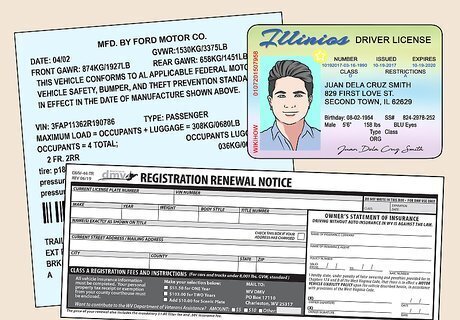
Gather the information you need to renew your registration. In some states, all you need to renew your registration is a copy of your renewal notice. In other states, you may have to provide proof of insurance or submit your driver's license number. Any necessary documents will be listed on your renewal notice. If you didn't receive a renewal notice, get the same information on the website for your state's department of motor vehicles or by calling the department's number.

Complete any required vehicle inspections. Many states require vehicles to be inspected before the registration can be renewed. The inspection confirms that your vehicle is safe to operate. If your vehicle doesn't pass inspection, the inspector will tell you what you need to fix so that it will. Get these repairs taken care of ASAP so you can pass inspection and renew your registration. You may also be required to pass an emissions inspection before you can renew your registration. If you live in California, for example, you’ll probably have to get a “smog check” done on your vehicle first.

Renew your registration online if possible. Most states allow you to renew your registration online, provided you do so before your registration has expired. If your expiration date is coming up within a week or two, however, consider renewing your registration in person. Otherwise, your new card may not arrive in the mail before your old registration expires. Your renewal notice may include a PIN or other code for you to enter when renewing your registration online. If you've lost your renewal notice, however, you may still be able to look up your information and renew online.

Visit your local DMV office if you can't renew online. You can always renew your registration at the nearest office of your state's department of motor vehicles. However, keep in mind that lines may be long, especially on Mondays and Tuesdays and towards the end of each month. So check to see if you can make an online reservation first! Typically, if you renew your registration in person, you'll get your new registration card immediately.
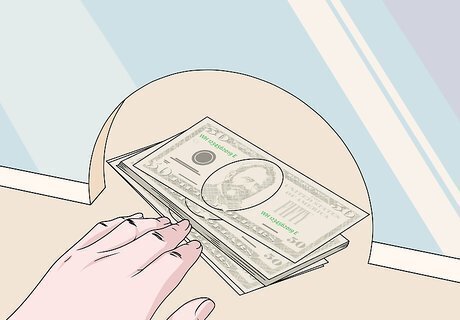
Pay your registration taxes and fees. When you renew your vehicle registration, most states charge a registration fee as well as various taxes for road use and law enforcement. The total you owe will be listed on your renewal notice, or you can find out on the department's website or by calling the phone number. Larger, heavier vehicles typically pay more road-use tax than lighter vehicles. Some states may offer discounts if you have a fuel-efficient or electric vehicle.

Contact the DMV if your new card gets delayed in the mail. Unless you’re able to get your new registration right away (such as by picking it up in person or printing it out at home), expect it to take 5-10 days to receive it by mail. If 10 days pass without any sign of your new registration, go ahead and get in touch with the DMV to rectify the problem. When you get your new registration card, destroy your old registration card and put the new one in your vehicle's glove box.











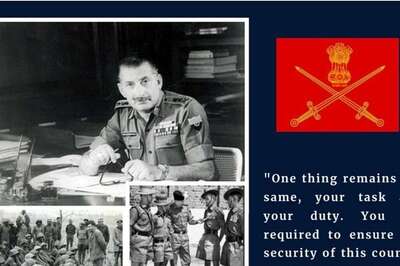








Comments
0 comment